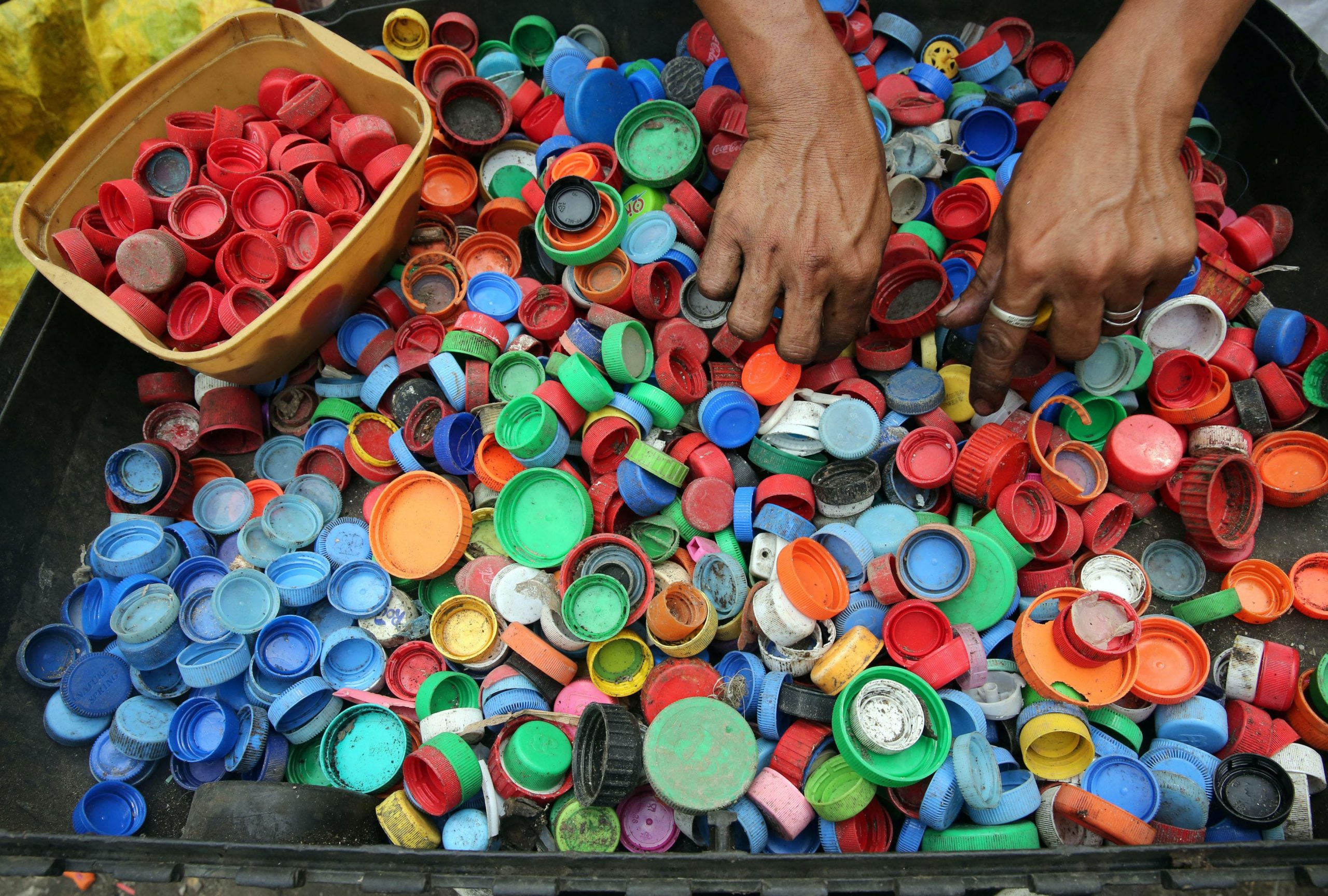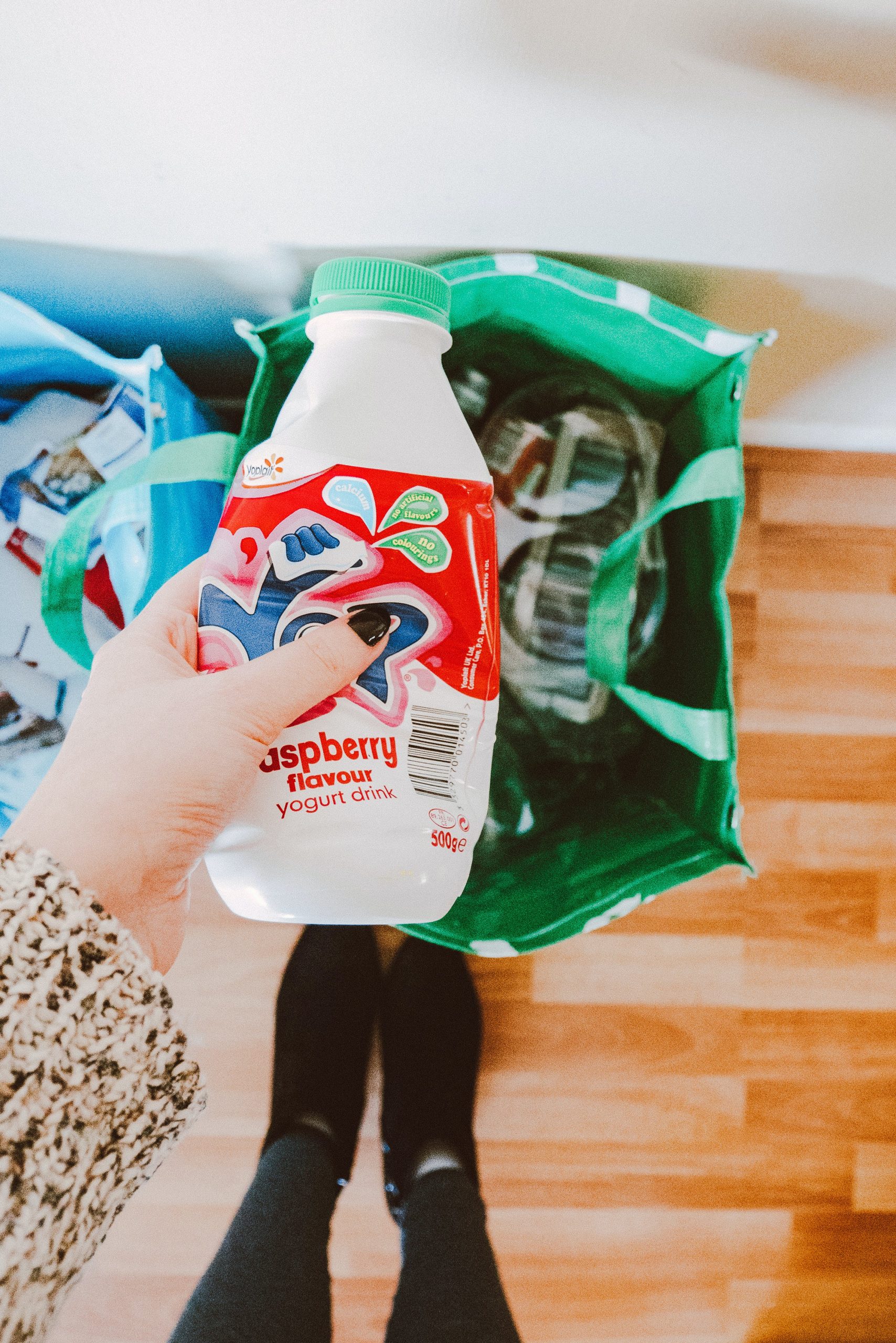In today’s environmentally conscious world, consumers are increasingly seeking products that are not only effective but also eco-friendly. As such, the demand for green cleaning products has grown significantly. However, with numerous products claiming to be “green” or “eco-friendly,” it becomes essential for businesses to provide accurate and reliable labeling for their cleaning products. Green cleaning product labeling plays a crucial role in informing consumers about the ingredients, certifications, and environmental impact of the product, ensuring transparency and building trust. This article explores the importance of green cleaning product labeling and addresses key questions that businesses may have regarding this topic, aiming to provide businesses with a comprehensive understanding of why accurate product labeling is vital in today’s competitive market.

Introduction
Green cleaning products have gained significant popularity in recent years, as more and more individuals and businesses prioritize environmental sustainability. However, with the growing demand for green cleaning products comes the need for accurate and trustworthy product labeling. Clear and informative labeling not only helps consumers make informed buying decisions, but also ensures compliance with regulations and promotes transparency in the industry. In this article, we will explore the importance of product labeling, the components of green cleaning product labels, and the challenges faced by manufacturers. We will also discuss the significance of eco-labels and certifications, as well as provide guidance on evaluating green cleaning product labels.
Understanding Green Cleaning Products
Defining Green Cleaning Products
Green cleaning products, also referred to as eco-friendly or sustainable cleaning products, are those that have been formulated with ingredients and manufacturing processes that minimize their impact on the environment. These products are designed to be safer for human health, reduce water and air pollution, and conserve resources. They are free from harmful chemicals such as phosphates, phthalates, and chlorine bleach, and are often derived from natural, renewable resources.
Benefits of Green Cleaning Products
Using green cleaning products offers numerous benefits. Firstly, they help protect human health by reducing exposure to harmful toxins found in conventional cleaning products. Many people, particularly those with allergies or sensitivities, find that switching to green cleaning products alleviates symptoms and improves indoor air quality. Secondly, green cleaning products are gentler on the environment. They minimize water pollution, reduce waste, and contribute to overall sustainability efforts. Additionally, they often come in concentrated formulas, which reduce packaging waste and transportation emissions.
Common Green Cleaning Ingredients
Green cleaning products utilize a wide range of natural ingredients to achieve their cleaning power. Some common ingredients include vinegar, baking soda, lemon juice, hydrogen peroxide, and essential oils such as tea tree oil and lavender oil. These natural ingredients have antimicrobial, degreasing, and deodorizing properties, making them effective alternatives to harsh chemicals found in conventional cleaning products.
Importance of Product Labeling
Consumer Awareness and Demand
Today’s consumers are increasingly conscious of the environmental and health impacts of the products they purchase. They want information that helps them make informed decisions and align their purchasing choices with their personal values. Accurate product labeling is crucial in meeting this demand, as it allows consumers to quickly identify and choose green cleaning products that meet their criteria. Clear labeling builds trust and loyalty among environmentally conscious consumers, who are more likely to continue supporting products and brands that provide transparent information.
Transparency and Accountability
Product labeling plays a key role in promoting transparency and accountability within the green cleaning industry. By clearly stating the ingredients used, manufacturers enable consumers to assess the sustainability and safety of a product. Accurate and informative labeling also allows for accountability, as it holds manufacturers responsible for the information they provide. Without proper labeling, it becomes difficult for consumers to evaluate the environmental and health impacts of their choices.
Compliance with Regulations
Product labeling is not just a matter of choice; it is also a legal requirement. Green cleaning product manufacturers must comply with a variety of regulations to ensure that their products are accurately labeled. These regulations often dictate the information that must be included on the label, such as a list of ingredients, usage instructions, and safety warnings. Compliance with these regulations is essential to avoid fines and penalties, as well as to establish trust and credibility in the market.
Components of Green Cleaning Product Labels
List of Ingredients
One of the most important components of a green cleaning product label is a comprehensive list of ingredients. This list should include all the ingredients used in the formulation, in descending order of their concentration. By providing this information, manufacturers enable consumers to make informed choices based on their individual needs and preferences. It also allows individuals with allergies or sensitivities to avoid certain ingredients that may cause adverse reactions. Furthermore, listing ingredients promotes transparency and builds trust between the manufacturer and the consumer.
Certifications and Seals
Green cleaning product labels often display certifications and seals to indicate compliance with specific standards and criteria. These certifications are awarded by third-party organizations and provide reassurance to consumers that the product meets certain environmental and health performance benchmarks. Common certifications include the EPA Safer Choice label, Green Seal, and Ecologo. These certifications streamline the decision-making process for consumers, who can quickly identify trustworthy and reliable green cleaning products.
Environmental Impact Information
To further assist consumers in making environmentally conscious choices, green cleaning product labels may include information regarding the product’s environmental impact. This can involve details about the product’s carbon footprint, water usage, and overall sustainability. By providing this information, manufacturers demonstrate their commitment to transparency and help consumers understand the broader implications of their purchasing decisions.
Usage and Safety Instructions
Clear and concise usage and safety instructions are essential components of green cleaning product labels. These instructions inform consumers about the proper application and handling of the product, ensuring its effective use and minimizing any potential risks. Safety warnings, precautions, and first-aid information should also be clearly stated to protect users from harm and encourage responsible use.
Understanding Eco-labels and Certifications
Types of Eco-labels and Certifications
Eco-labels and certifications are essential tools in the green cleaning industry, serving as indicators of a product’s environmental and health performance. Different types of eco-labels and certifications are available, each with its own set of criteria and standards. Some certifications focus on the environmental impact of the product’s lifecycle, from sourcing of raw materials to disposal. Others concentrate on specific environmental aspects, such as air quality or water usage. It is important for manufacturers and consumers alike to understand the distinctions between different eco-labels and certifications to make informed decisions.
Criteria for Certification
Eco-labels and certifications are awarded based on specific criteria set by the certifying organizations. These criteria vary depending on the program and may include factors such as ingredient transparency, environmental impact reduction, energy efficiency, and social responsibility. To earn a certification, manufacturers must undergo a rigorous assessment process that often involves testing, audits, and inspections. This ensures that the products meet the desired standards and provide accurate and reliable information to consumers.
Recognized Eco-labeling Programs
Several reputable eco-labeling programs exist to help consumers identify green cleaning products that meet their sustainability goals. Some of the most recognized programs include the EPA Safer Choice Program, Green Seal, Ecologo, and the Cradle to Cradle Certified Product Standard. These programs have established themselves as leaders in promoting transparent labeling practices and encouraging the use of environmentally responsible products.
Evaluating Green Cleaning Product Labels
Identifying Misleading Claims
In an increasingly competitive market, some manufacturers may employ misleading or exaggerated claims on their product labels to attract consumers. It is essential for consumers to be able to identify and distinguish between genuine green cleaning products and those that are merely greenwashing. Greenwashing refers to the practice of making false or misleading environmental claims about a product’s sustainability. To avoid falling victim to greenwashing, consumers should carefully review and evaluate the claims made on green cleaning product labels, ensuring they are backed by credible certifications and evidence.
Avoiding Greenwashing
One way to avoid greenwashing is by looking for third-party certifications and seals on product labels. These certifications provide an objective assessment of a product’s environmental and health performance, minimizing the risk of falling for misleading claims. Additionally, consumers should research the credibility of the certifying organization to ensure that it maintains rigorous standards and transparency. By thoroughly evaluating green cleaning product labels and certifications, consumers can make informed choices that align with their environmental values.
Understanding Third-Party Certifications
Third-party certifications are a crucial aspect of green cleaning product labels. They provide an independent evaluation of a product’s sustainability and demonstrate compliance with recognized standards. When evaluating third-party certifications, it is important to consider the credibility and reputation of the certifying organization. Some certifications may be more stringent and reliable than others, so it is advisable to choose products that bear certifications from reputable and recognized programs.

Compliance with Green Cleaning Regulations
Federal Regulations
In the United States, green cleaning product manufacturers must adhere to various federal regulations to ensure compliance and consumer safety. The Federal Trade Commission (FTC) imposes regulations to prevent deceptive practices in advertising and labeling, ensuring that green cleaning product claims are truthful and substantiated. The Environmental Protection Agency (EPA) also regulates the use of certain chemicals in cleaning products and provides guidelines for eco-labels, such as the EPA Safer Choice label. Compliance with these federal regulations is critical to avoid legal complications and maintain the integrity of green cleaning product labels.
State and Local Regulations
In addition to federal regulations, green cleaning product manufacturers may also need to comply with state and local regulations. Some states have implemented their own labeling requirements for cleaning products, often focusing on ingredient transparency and environmental impact. Local regulations may also apply, particularly in areas with specific environmental concerns or sensitivities. To ensure full compliance, manufacturers must stay up-to-date with the regulations specific to their operating regions.
International Standards
Green cleaning product manufacturers operating on an international scale also face the challenge of complying with varying standards and regulations across different countries. Each country may have its own legal framework and labeling requirements, making it necessary for manufacturers to understand and adhere to the regulations specific to each market. Compliance with international standards ensures that global consumers can trust the credibility and sustainability of green cleaning products.
Challenges Faced by Green Cleaning Product Manufacturers
Navigating Complex Regulations
Complying with regulations can be a complex and challenging task for green cleaning product manufacturers. The landscape of regulatory requirements is constantly evolving, requiring manufacturers to stay informed and adapt their practices accordingly. Navigating the various federal, state, and international regulations can be time-consuming and resource-intensive, often necessitating the assistance of legal professionals with expertise in environmental law.
Balancing Costs and Eco-Friendly Practices
Another challenge faced by green cleaning product manufacturers is the balance between implementing eco-friendly practices and managing costs. Sustainable ingredients and manufacturing processes may be more expensive than their conventional counterparts, increasing the production costs of green cleaning products. Manufacturers must carefully analyze the financial implications of adopting environmentally friendly practices and find creative solutions to ensure the affordability and accessibility of their products.
Ensuring Proper Labeling
Accurate and informative labeling is critical, yet it can present its own set of challenges for green cleaning product manufacturers. Developing labels that meet all regulatory requirements while effectively communicating the product’s sustainability attributes can be demanding. Ensuring consistency across product lines and complying with evolving regulations requires careful attention to detail and a commitment to transparency. Manufacturers must invest in systems and processes that facilitate proper labeling practices and uphold their environmental commitment.

Consumer Education and Awareness
The Role of Media and Advertising
Media and advertising play a crucial role in educating consumers about green cleaning products and influencing purchasing decisions. By highlighting the importance of sustainability and environmental responsibility, media platforms can create awareness and promote eco-friendly lifestyles. Advertisements that emphasize the benefits of green cleaning and educate consumers about the significance of product labeling can drive interest and demand for sustainable alternatives.
Promoting Sustainable Choices
Consumer education efforts should go beyond advertising and media campaigns. Additionally, retailers can play a significant role in promoting sustainable choices by ensuring that green cleaning products are readily available and easily identifiable on their shelves. Educating employees about the benefits and proper usage of green cleaning products enables them to assist customers in making informed purchasing decisions and encourage environmentally conscious choices.
Encouraging Responsible Disposal
Proper disposal of green cleaning products is an often overlooked aspect of sustainability. Manufacturers and regulatory agencies should collaborate to educate consumers on the eco-friendly disposal methods for these products. Properly labeled packaging can include instructions for safe disposal or recycling, helping consumers minimize their environmental impact even after the product has been used. By encouraging responsible disposal practices, manufacturers and consumers can contribute to a circular and sustainable economy.
Frequently Asked Questions
1. What are common eco-friendly cleaning ingredients?
Common eco-friendly cleaning ingredients include vinegar, baking soda, lemon juice, hydrogen peroxide, and essential oils such as tea tree oil and lavender oil. These natural ingredients have antimicrobial, degreasing, and deodorizing properties, making them effective alternatives to harsh chemicals found in conventional cleaning products.
2. How can I identify a genuinely green cleaning product?
To identify a genuinely green cleaning product, look for third-party certifications and seals on the product label. Certifications such as the EPA Safer Choice label, Green Seal, and Ecologo indicate that the product has undergone independent evaluation and meets specific environmental and health performance benchmarks. Additionally, review the list of ingredients and avoid products that contain harmful chemicals such as phosphates, phthalates, and chlorine bleach.
3. Are green cleaning products effective in killing germs?
Yes, green cleaning products can be effective in killing germs when used properly. Many eco-friendly ingredients, such as hydrogen peroxide and tea tree oil, have antimicrobial properties that can help eliminate bacteria and viruses. However, it is important to follow the usage instructions and recommended contact times provided by the manufacturer to ensure the products are used effectively.
4. Do I need to use additional safety precautions with green cleaning products?
While green cleaning products are generally safer for human health compared to conventional cleaning products, it is still important to take basic safety precautions. Some green cleaning ingredients, such as essential oils, can cause allergic reactions in some individuals. It is advisable to wear gloves when handling cleaning products, ensure proper ventilation in the area being cleaned, and avoid any contact with eyes or ingestion of the products. Always follow the safety instructions provided by the manufacturer.
5. Are green cleaning products more expensive than traditional ones?
Green cleaning products may be slightly more expensive than traditional ones due to the higher cost of sustainable ingredients and manufacturing processes. However, with increased demand and advancements in eco-friendly technologies, the price difference is becoming less significant. Additionally, green cleaning products often come in concentrated formulas, which can be diluted for use, making them cost-effective in the long run. Consider the long-term benefits to your health and the environment when evaluating the cost of green cleaning products.








